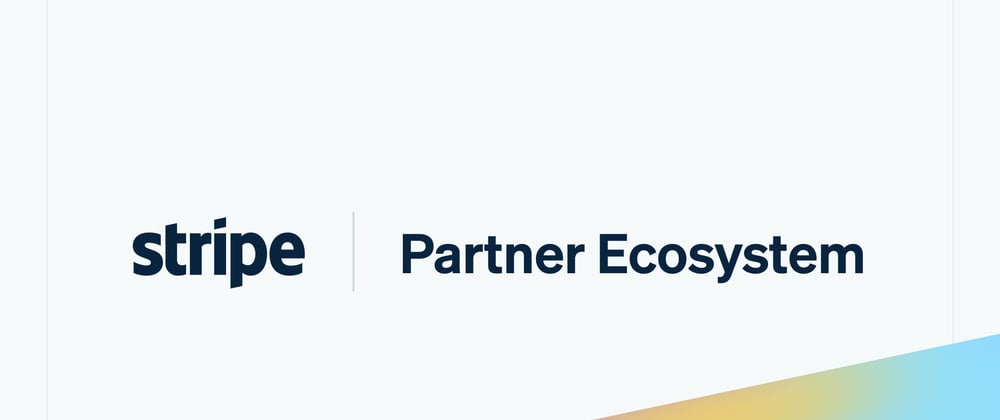You may be wondering, “Why do I need to update payment processing in my online business?” If the pandemic showed us anything, it’s that the world is becoming more virtual than ever before. Don’t let your business fall behind. Here’s five ways you can lean into your new favorite online payments processing service, from your local (virtual) Certified Stripe Developer.
Utilize Stripe prebuilt components
Save time and energy by utilizing the Stripe Prebuilt Checkout solutions for low code or no code options. Checkout allows the customer to redirect to a Stripe-hosted Checkout session where the payment method can be input, processed and finalized. This ease of integration is offered at no cost to your business all while incorporating best practices to maximize your conversion. To figure out if Stripe Checkout is suited for your business needs, all you need are three things to get started: A free Stripe account, the ability to create a session with the product and/or service the customer intends to purchase, and the ability to redirect to a Checkout session. While that is all necessary to get started with Stripe Checkout, the business can add on to the implementation to send an email after a purchase is completed or automate order fulfillment through webhook handlers. The Checkout session is customizable to the business needs and can include one-time or subscription based purchase, tax compliance, promo codes, and many other features. The account administrator is able to view all information collected from the Checkout session and any other Stripe API’s used in the Stripe Dashboard.
Here is an example of the Stripe Checkout page, which you may even recognize from some of your favorite online establishments, as well as step-by-step instructions on how to use the sample application codebase. If your business wants more control over the branding in their checkout flow, Stripe offers Elements or Stripe.js.
Incorporate Stripe Elements into your existing application

Do you have your website configured and you need an API to authenticate and process payments online? Look no further! Your business can build the payments implementation with Stripe Elements. Although utilizing this approach will take more time and code for the implementer, it allows the business to accept online payments with the most control over their branding.
The Stripe Elements library allows the business to control what information is collected at checkout, securely handle payment information with customizable UI components, and manage customer account data. This library significantly reduces the requirement for PCI compliance from your online business since your business server will not handle any payment information directly with Stripe Elements. Payment methods are sent to your business server in the form of tokens. The library also allows the business to become more adaptable to newer forms of payment. Stripe Elements provide a single interface for accepting credit and debit cards, digital wallets like Apple Pay, Google Pay, and Buy Now Pay Later methods - which helps increase conversions for your online business!
Control your cost of services
No need to pay a monthly premium to operate your online business anymore. Using Stripe Payments, all you pay is a fixed percent per transaction for small transaction volumes (integrated pricing) or a variable percent per transaction for large transaction volumes (interchange+ pricing). Stripe’s integrated pricing allows the business account to pay 2.9% + $0.30 per transaction which is better suited for businesses that are just starting up with not a large volume of transactions. On the other hand, interchange+ pricing offers a variable cost per transaction, coming from the ever-changing processing fees from the payment method providers. This pricing schema is better suited for companies that expect a large number of transactions. Both pricing methods give your business access to all Stripe payments has to offer, with a very intuitive dashboard where the account administrator has access to all necessary information.
Built with security and regulations in mind
We all know fraud is not 100% preventable, but you can sleep soundly knowing that Stripe Payments API is built with algorithms to automatically decline and/or flag payments for review that are suspected to be fraudulent. Stripe’s Payments API includes machine learning algorithms that aim to reduce any fraudulent payments against your company automatically. For even more fraud protection, Stripe offers Radar. Radar creates a risk score for every card payment, helps the business process disputes, and gives the business the ability to set custom Radar rules to allow, block, or require more authentication from the cardholder on purchase. The payment’s risk score is calculated on a scale from 0-99 based on Stripe’s evaluation and is placed into three categories: normal risk - the payment is processed, elevated risk - the payment is processed and flagged for review, and high risk - payment is blocked. Here is a view of how a payment appears on the Stripe account, with the risk evaluation in the lower right.
Next to fraud, your business is also probably wondering about Stripe’s security and compliance measures. Using Stripe Checkout and Elements inherently protects your customers information through tokenization and encryption. Stripe servers are PCI Service Provider Level 1, the most stringent level of certification available in the payments industry. Stripe will protect your customer’s payment information and allow your servers to access the customers payment method in the form of a token. With Stripe currently being used around the world, it is critical for them to keep up to date with their payments compliance and any updates to international regulations.
Access to extensive docs and a responsive support team
If you ever get stumped on how to solve an issue when building your Stripe implementation - don’t fret! Stripe has created a vast amount of documentation, video tutorials, sample code repositories, and a Discord server all at your disposal. Not to mention, Stripe has the most responsive support team I have ever come across. The Stripe API is in constant development so you don’t have to worry about any security issues, compliance issues or incompatibilities in the years to come.
Getting the opportunity to become a Stripe Certified Developer has opened my eyes to how challenging incorporating online payment processing software can be on its own. From the large amount of complicated regulations worldwide, the wide array of changing payment methods, and security compliance for servers storing payment methods - it can take a business a significant amount of time to build out a payment processing system for their own use. Working with the Stripe API, I have learned how useful their API’s can be for a business to quickly start processing payments online and open a new channel of revenue.










Top comments (0)